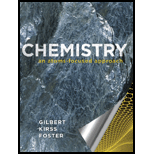
To:
Find the radioactivity of the Radium in the watch.
Answer to Problem 21.58QA
Solution:
Explanation of Solution
1) Concept:
The radioactivity is related to the number of atoms decaying by the relation
2) Formulae:
i)
ii)
iii)
iv)
3) Given:
i) Half-life of Radium-226
ii) Initial quantity of Radium-226 used
iii) Initial time
iv) Final time
4) Calculations:
Half-life of the Radium-226 is given in years, which we have to convert it into seconds because the radioactivity is measured in seconds. Therefore, the half-life in seconds is
The decay rate constant for the decay of Radium-226 is:
The number of atoms in
The time interval is:
We have to convert this time in seconds, which is done as:
The number of atoms remaining after decay can be found out by the following relation:
Now, we know the atoms remaining, we can find out the radioactivity remaining in the watch.
Thus, the radioactivity of the watch today, is
Now, we know that
Therefore, the radioactivity in Ci is:
Thus, the radioactivity of the watch today is
Conclusion:
The radioactivity left after a certain time period can be found out if we have the initial quantity and the half-life of the radioactive element.
Want to see more full solutions like this?
Chapter 21 Solutions
Chemistry: An Atoms-Focused Approach
 ChemistryChemistryISBN:9781305957404Author:Steven S. Zumdahl, Susan A. Zumdahl, Donald J. DeCostePublisher:Cengage Learning
ChemistryChemistryISBN:9781305957404Author:Steven S. Zumdahl, Susan A. Zumdahl, Donald J. DeCostePublisher:Cengage Learning ChemistryChemistryISBN:9781259911156Author:Raymond Chang Dr., Jason Overby ProfessorPublisher:McGraw-Hill Education
ChemistryChemistryISBN:9781259911156Author:Raymond Chang Dr., Jason Overby ProfessorPublisher:McGraw-Hill Education Principles of Instrumental AnalysisChemistryISBN:9781305577213Author:Douglas A. Skoog, F. James Holler, Stanley R. CrouchPublisher:Cengage Learning
Principles of Instrumental AnalysisChemistryISBN:9781305577213Author:Douglas A. Skoog, F. James Holler, Stanley R. CrouchPublisher:Cengage Learning Organic ChemistryChemistryISBN:9780078021558Author:Janice Gorzynski Smith Dr.Publisher:McGraw-Hill Education
Organic ChemistryChemistryISBN:9780078021558Author:Janice Gorzynski Smith Dr.Publisher:McGraw-Hill Education Chemistry: Principles and ReactionsChemistryISBN:9781305079373Author:William L. Masterton, Cecile N. HurleyPublisher:Cengage Learning
Chemistry: Principles and ReactionsChemistryISBN:9781305079373Author:William L. Masterton, Cecile N. HurleyPublisher:Cengage Learning Elementary Principles of Chemical Processes, Bind...ChemistryISBN:9781118431221Author:Richard M. Felder, Ronald W. Rousseau, Lisa G. BullardPublisher:WILEY
Elementary Principles of Chemical Processes, Bind...ChemistryISBN:9781118431221Author:Richard M. Felder, Ronald W. Rousseau, Lisa G. BullardPublisher:WILEY





